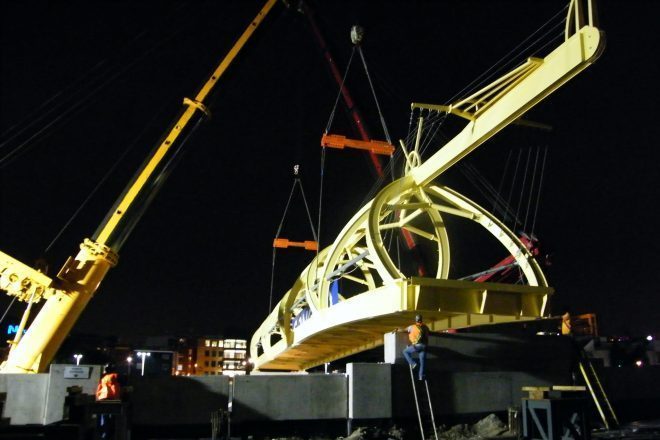When Do I Need a Critical Lift Plan?

When to employ a critical lift plan is one of the most frequent questions our lifting engineers are asked, and one that has no single definitive answer.
Lift plans are used as a precautionary means of protecting your load, your people, and your surrounding property during a lift. Lifting can be performed safely, but this depends on the unique characteristics of the lift and how it is planned out. How do you know when a lift has the potential to be a risk?
Below are some common activities you can consider when deciding if a lift plan is necessary for any project you are working on. These recommendations are based on IIA Lifting Services experience with critical lift planning, in combination with the recommendations stated in applicable standards.
When assessing your lift, you will want to consider the following questions:
Are there potential hazards to the work area?
Is the soil/ground stable enough for the crane and the load? Can the outriggers be properly stabilized? Are there power lines or other structures obstructing the delivery? Can you obtain a minimum safe distance from potential obstacles? Is there an environmental impact if you strike any nearby pipelines, tanks, storage facilities, etc.?
Is there a potential risk to people?
This could relate to any potential hazard involving persons. Are personnel being lifted? Is the load being moved or suspended over areas of the general public? Is overhead protection needed to protect the public? Is there an environmental or chemical risk to the public if the load drops?
Is a risk inherent in the load itself?
Can the load be potentially unstable due to dynamic forces? Does the shape, size, or weight of the load create a risk in some way? Does the nature of the load pose a risk (e.g. is it flammable)?
Does the environment have an adverse effect on the lift?
Is there an adverse risk of heavy wind, rain, or snow? Can ambient temperature affect the load handling? Is this a daytime or nighttime lift? Is the lift being moved from one type of surface to another (e.g. water to land, land to water, water to water)?
Are load handling and rigging capacity a concern?
Is the load weight significant compared to the crane and rigging capacity? Is there a risk of dynamic loading? Is the load weight information accurate/reliable? Do you need multiple cranes to handle the load, and if so, how do you sequence the lift? Is the equipment properly certified and safe to use?
Can failure have a financial impact?
If the load fails, how will it affect your deadline? Is the load easily replaceable? What is the potential cost of accidentally damaging any nearby structures?
This is by no means an exhaustive list and you may need to consider other factors. If during your assessment you can identify any of these potential risks as being significant, then it may be prudent to plan for a critical lift.
Get More IIA In Your Inbox!
Get the latest tips, news, tactics, and resources from us in your inbox every month.




